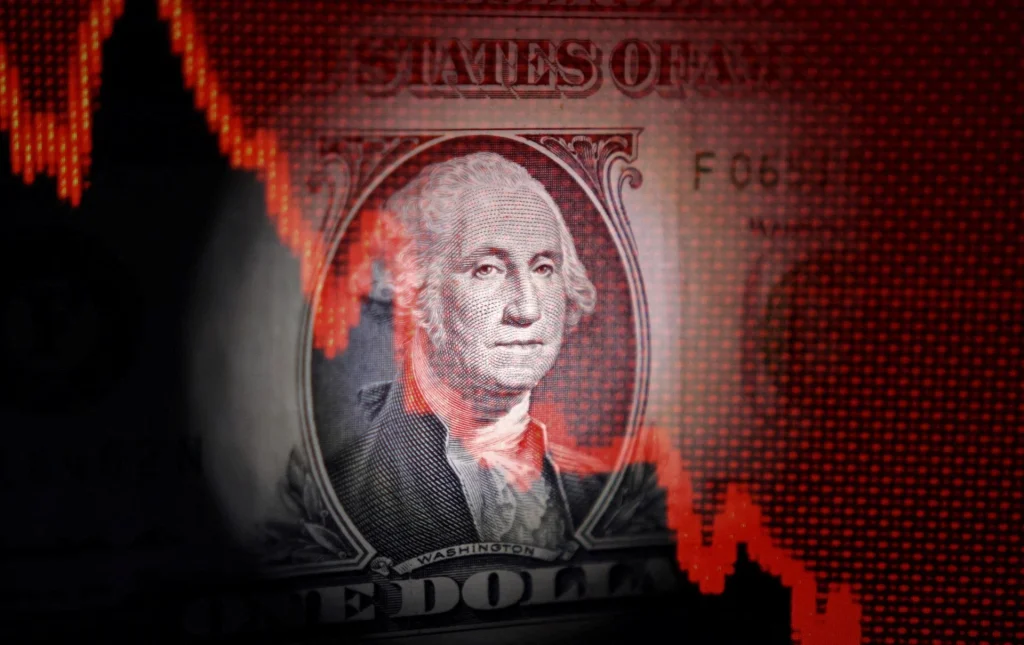[SINGAPORE] US/Asean foreign exchange (FX) markets were lukewarm as announcements of a China-US trade agreement revealed few details following talks in London on Wednesday (Jun 11), with widespread uncertainty now becoming the norm for investors.
DBS analysts Eugene Leow and Philip Wee said: “Implied volatility is now reflecting little to no stresses and is essentially back at pre-Liberation Day levels.”
This hardly surprised market analysts, who observed that mere hints of favourable news – in a world where policy reversals have become the norm – are no longer as likely to move markets.
Maybank analyst Saktiandi Supaat said: “Markets now show a tendency to react less to sweeping headlines, and only a concrete agreement or something permanent can drive markets into a more lasting direction.”
De-dollarisation
Indeed, more permanent trends continue to work against the dollar as Asean currencies appreciate amid USD weakness. The dollar index traded at about 98.4 on Thursday morning, having fallen about 5 per cent since before Trump’s “Liberation Day” tariffs on Apr 2.
Once-attractive USD deposits are beginning to unwind in Asean portfolios, with pairs such as USD and SGD declining about 4.5 per cent from before the tariff announcement, and the USD/Thai baht falling 5.5 per cent.
A NEWSLETTER FOR YOU

Friday, 8.30 am
Asean Business
Business insights centering on South-east Asia’s fast-growing economies.
Since around 2022, Asean corporates and investors have built up sizeable onshore US dollar deposits, said a Bank of America (BOA) report by FX strategists Abhay Gupta and Claudio Piron. “FX deposits in most of Asean are near the highs, with a total of US$230 billion across the Asean-4 economies,” they said.
Drawn to the greenback’s relative strength, higher deposit rates and its reserve currency status, Asian exporters and other investors avoided converting their earnings into local currencies to maintain their dollar holdings.
But now, this may be changing. A trend of “de-dollarisation” has taken hold in global markets as the greenback loses its charm among Asean investors and corporates. “The dollar is starting to be viewed as overvalued since the end of last year,” Gupta told The Business Times.

“Global corporations have been caught long (in the) US dollar as they held on to their export proceeds for far too long,” UOB said.
Gupta said that institutional investors are likely to be the quickest to rebalance their deposits, as themes such as a weakening dollar, uncertainty towards Washington’s escalating fiscal deficit, and waning confidence in US credibility prompt a rebalancing away from dollar deposits.
Malaysia and Thailand, which run persistent current account surpluses, are likely to experience the strongest appreciation pressures as investors convert US holdings back into local currencies.
The two countries feature prominent US holdings in pension funds and mutual funds, which are typically more risk-averse and adopt larger hedging ratios to defend their dollar positions, Gupta noted. Such hedging activity would place further buying pressure on local currencies as financial institutions lock in forward exchange rates, he noted.
Together with the Singapore dollar, these three low-yielding currencies have led gains due to their exposure to global trade cycles, the BOA economists said.
Corporates and retail investors are likely to rebalance as well, but will not do so as immediately as institutional investors, said Gupta. This will provide lagging tailwinds into Asean currencies such as Indonesia’s rupiah and the Philippines’ peso.
He told BT: “As the deposits mature, people realise that their total return has not been as attractive, so they gradually convert back to local currency deposits.” Unlike the much quicker drawdowns on the dollar by institutional investors, retail and corporate selling pressure could sustain tailwinds for Asean currencies well into 2026, he said.
But others are less certain of the Asean wave’s sustainability in the short-term, with UOB noting higher levels of implied volatility in the foreign exchange options markets. “Historically, such periods of heightened foreign exchange volatility have often preceded phases of weakness in Asian currencies,” said UOB.
The bank also cited tariff doubts and slower growth prospects for Asia, cautioning that the region’s currency upside may be limited in the near term. UOB projected that most Asian pairs with the greenback would reverse their uptrend through Q3, before resuming their climb in 2026.
Central bank moves
For countries running high rates, such as the Philippines and Indonesia, the dollar’s slide is a welcome shift. As both countries’ central banks implement inflation targeting monetary policies, wrote Gupta and Piron, stronger currencies would further mitigate inflation by keeping import prices low.
Yet, as uncertainty about tariffs and external demand remains, stronger regional currencies could hurt export competitiveness and have to be carefully managed by central banks, Gupta warned.
“Central banks have been easing, but in a measured way, due to uncertainty towards the final size of the tariffs,” he said.


